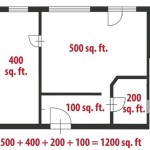```html
Deconstructing the Sky: Identifying Aircraft Overflights
The sound of an aircraft overhead is a common occurrence in many populated areas. From the gentle hum of a single-engine propeller plane to the thunderous roar of a jet airliner, these sounds represent activity and connectivity in the modern world. However, the question "What plane just went over my house?" is a frequent query for those curious about their aerial environment. Answering this question definitively requires a combination of observation, technology, and understanding of air traffic patterns.
Several factors contribute to the difficulty in immediately identifying an aircraft solely by sight or sound. Weather conditions can significantly alter the perceived sound of an engine, making it difficult to distinguish between different types of aircraft. Cloud cover or darkness might obscure visual identification markings. Furthermore, distance and altitude can create illusions regarding the size and speed of the aircraft. Therefore, relying solely on subjective perceptions can lead to inaccurate conclusions.
Leveraging Online Flight Tracking Services
One of the most reliable methods for identifying an aircraft overhead is to utilize online flight tracking services. These services aggregate data from various sources, including air traffic control radar, Automatic Dependent Surveillance-Broadcast (ADS-B) transponders, and multilateration networks. ADS-B is a surveillance technology in which an aircraft determines its position via satellite navigation and periodically broadcasts it, enabling it to be tracked. Websites and applications like FlightAware, Flightradar24, and Plane Finder are popular examples of platforms that display this information in real-time.
To effectively use these services, several steps are involved. First, ensure that the device being used has location services enabled. This allows the flight tracking service to accurately pinpoint the user's geographical location on a map. Second, open the chosen flight tracking website or application. The map should display nearby aircraft, represented by icons that indicate their type, altitude, speed, and direction of travel. Third, observe the aircraft overhead and correlate its appearance and direction with the information displayed on the map. The application usually provides an estimated bearing, which can be compared to the observed flight path. This comparison should help in matching the plane observed visually to a specific plane on the tracking service.
These flight tracking services offer a wealth of additional information about each flight. Clicking on an aircraft icon typically reveals details such as the aircraft registration number (tail number), the airline operating the flight, the origin and destination airports, the flight number, the aircraft type (e.g., Boeing 737, Airbus A320), the altitude, the speed, and the estimated time of arrival (ETA) at the destination. This information can be useful for confirming whether the identified aircraft matches the user's initial observations. Furthermore, many services offer historical flight data, allowing users to review past flight paths and identify aircraft that have flown over their location in the past.
It's important to acknowledge the limitations of flight tracking services. Not all aircraft are equipped with ADS-B transponders, particularly older or smaller general aviation aircraft. Furthermore, some military aircraft may not be required to transmit ADS-B signals for security reasons. In these cases, the aircraft will not be visible on commercial flight tracking websites. Additionally, data accuracy can be affected by signal interference, technical glitches, or deliberate manipulation. Therefore, treat the information provided by these services as estimations, rather than absolute certainties.
Analyzing Flight Paths and Air Traffic Patterns
Understanding local air traffic patterns can significantly aid in identifying aircraft overflights. Air traffic controllers establish specific routes and altitudes for aircraft to ensure safe and efficient movement within controlled airspace. These routes, known as standard instrument departures (SIDs) and standard terminal arrival routes (STARs), are designed to guide aircraft to and from airports. Familiarizing oneself with the SIDs and STARs in the local area can help predict the types of aircraft that are likely to be observed overhead.
SIDs and STARs are published documents that outline the specific procedures and waypoints that pilots must follow during takeoff and landing. These procedures are designed to minimize noise pollution, avoid congested areas, and ensure separation between aircraft. The routes are often designed to concentrate air traffic along specific corridors, which means that some areas may experience a higher frequency of overflights than others. AirNav.com and similar resources provide access to these published procedures.
Beyond SIDs and STARs, prevailing wind conditions affect flight patterns. Aircraft typically take off and land into the wind to maximize lift and minimize landing distance. Therefore, if the wind direction changes, the direction of approach and departure at nearby airports may also change, resulting in different flight paths over residential areas. Observing the prevailing wind direction can provide clues about which runways are being used at nearby airports and, consequently, which areas are likely to experience overflights.
General aviation traffic also contributes to the aircraft overhead. Small, privately owned aircraft often operate outside of controlled airspace and follow less predictable routes. These aircraft may be used for recreational flying, flight training, or business travel. Identifying these aircraft can be more challenging, as they are less likely to be equipped with ADS-B transponders and their flight paths are less constrained by established procedures. Observing the aircraft's size, engine configuration, and flight characteristics can sometimes provide clues about its type and purpose.
Utilizing Sound Recognition Applications and Local Resources
Emerging technologies offer alternative methods for identifying aircraft based on sound. Sound recognition applications, similar to those used for identifying birdsong or music, are being developed to analyze the unique audio signatures of different aircraft engines. These applications use sophisticated algorithms to compare the recorded sound to a database of known aircraft engine sounds, providing a potential match. While still in their early stages of development, these applications hold promise for quickly identifying aircraft based solely on their auditory signature.
Furthermore, contacting local resources can provide valuable insights into aircraft activity in the area. Airport authorities, local aviation clubs, and citizen aviation groups can often offer information about scheduled flights, common flight paths, and unusual aircraft activity. These organizations may also conduct community outreach programs to educate residents about aviation operations and address concerns about noise pollution or safety.
Additionally, online forums and social media groups dedicated to aviation enthusiasts can be useful resources. These communities often consist of experienced pilots, air traffic controllers, and aviation hobbyists who can provide expert opinions and insights into aircraft identification. Posting a description of the aircraft and the circumstances of the overflight, along with any available photos or videos, can elicit helpful responses from knowledgeable members of the community. However, it is always essential to critically evaluate the information obtained from online sources and verify it with other reliable resources.
While identifying the specific aircraft that just flew over a house can be challenging, combining direct observation with the tools and knowledge outlined above can significantly increase the likelihood of a successful identification. The increasing availability of flight tracking services, the growing sophistication of sound recognition technology, and the accessibility of local aviation resources are empowering individuals to better understand and appreciate their aerial environment.
```
What Plane Just Flew Over My House Here S An Easy Way To Find Out

What Plane Just Flew Over My House Here S An Easy Way To Find Out

What Plane Just Flew Over My House Here S An Easy Way To Find Out

What Plane Just Flew Over My House Here S An Easy Way To Find Out

What Plane Just Flew Over My House Here S An Easy Way To Find Out

What Plane Just Flew Over My House Here S An Easy Way To Find Out

Why Am I So Excited To Have Seen A Plane Fly Over My Home It Was Tayl Tiktok

What Plane Just Flew Over My House Here S An Easy Way To Find Out

How To Identify Flights Overhead And Ships At Sea For Free Using Your Smartphone Frommer S

Lockheed U 2 Wikipedia
Related Posts








